UNIVERSITY DNA
King's College London
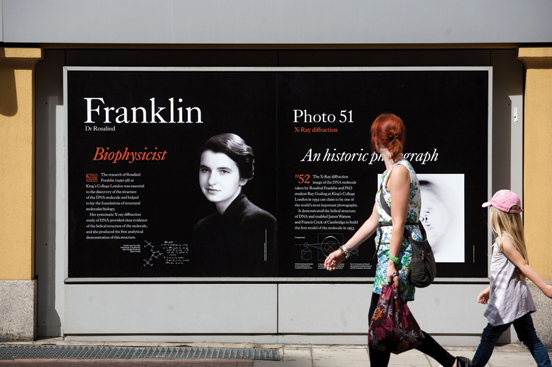
King's College London's School of Biomedical Science is situated in the Franklin-Wilkins Building on its Waterloo Campus. As part of an ongoing project to raise public awareness of this world-renowned university, Atelier has been developing site-specific graphics for each campus.
The Franklin-Wilkins Building is named after the momentous contributions made by King's researchers Rosalind Franklin, Maurice Wilkins and their students when, in the early 1950s, they helped to establish the helical structure of DNA.
When we first started thinking about this project, we realised that we had a very limited understanding of the subject of DNA. What could be more complex for a non-scientific mind than this? Yet every living thing is made from it and it is obviously important to us, so this project became an opportunity to present the DNA concept in terms that even we — 'the ordinary man in the street' — could grasp.
The building's façade now tells this amazing story in a series of engaging graphic panels. The sequence illustrates both the degree of precision achieved and the internal cooperation between different science departments at King's. The frieze features many images sourced by Atelier from King's own archives and includes Photo 51, the earliest X-ray diffraction image of a DNA helix, taken by Dr Rosalind Franklin and her PhD student Ray Gosling. The pioneering equipment used, extracts from contemporary research notes, and photographs of the key people involved are also included. Written in a very brief but engaging style, the story is supported by specially commissioned diagrams that help to explain the key principles to passers-by.
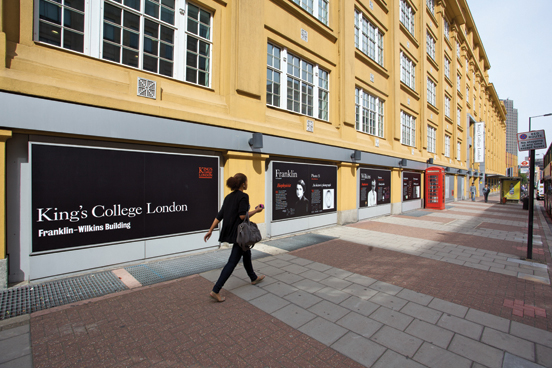
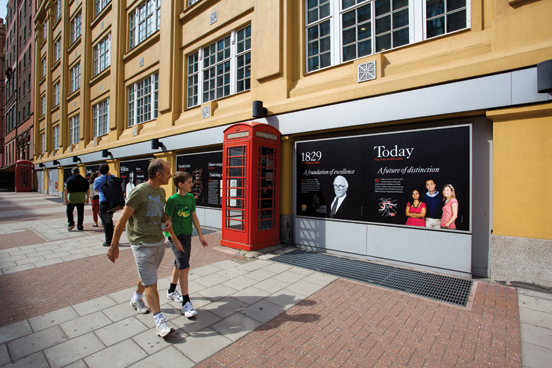
A previously unremarkable building has become another proud London landmark. It is amusing to see passers-by break step when they have been distracted by a fragment of the DNA story.

Play the animation; take a walk along Stamford Street and experience the frieze for yourself.
![]()
A PROUD MOMENT
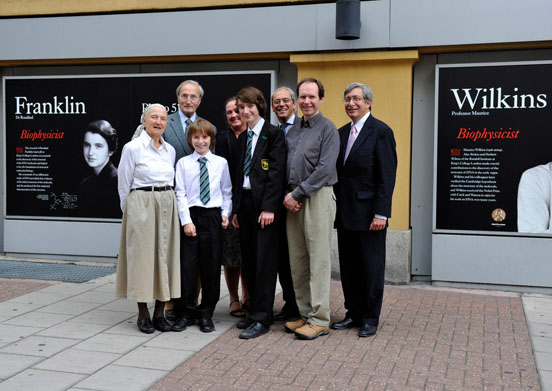 September 2010; an historic occasion. The project was unveiled in a special ceremony attended by three generations of the Franklin and Wilkins families.
September 2010; an historic occasion. The project was unveiled in a special ceremony attended by three generations of the Franklin and Wilkins families.
![]()
EXPLAINING A DNA HELIX, USING A REVOLVING DOOR
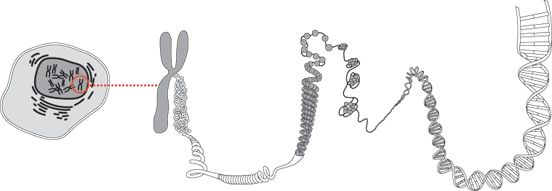
Human bodies comprise 100 trillion cells within each of which are 23 pairs of chromosomes, each with a continuous double-helical strand of DNA. This DNA contains unique information that determines most aspects of our appearance, health and even our behaviour.
We had no difficulty in creating an extended diagram that unravelled a DNA strand (see above) but our 'right-sided' brains seemed unable to grasp fully just how small a DNA helix really is. Then one day when we were entering the building to attend a meeting, we had a genuine eureka moment. The glass entrance doors that we were pushing against were four revolving planes within a glass cylinder. The idea struck us; could the entrance doors be used to demonstrate the structure of a DNA helix?
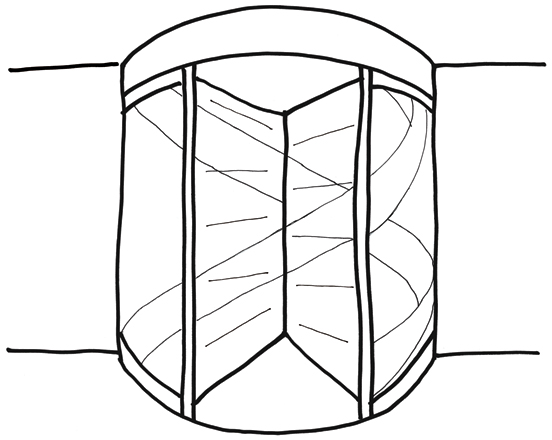
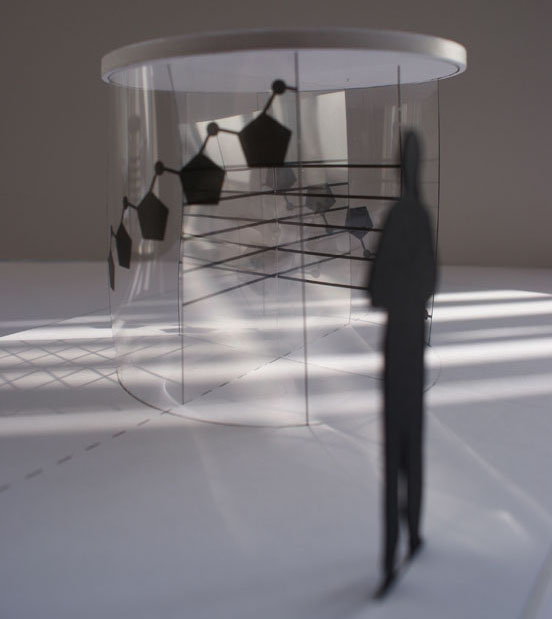
Back in the studio we did some crude sketches, then we made a model. We then took these ideas to the wonderfully patient Dr Roberts in the Department of Medical & Molecular Genetics at King's. He did the very complicated scaling calculations and helped us produce a linear outline of a DNA helix.
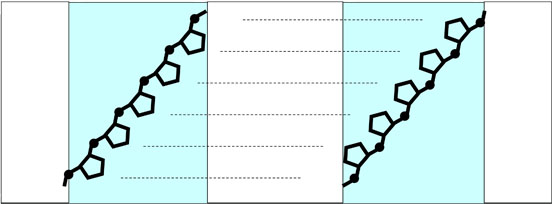
The outer glass cylinder became the outer backbone of the helix.
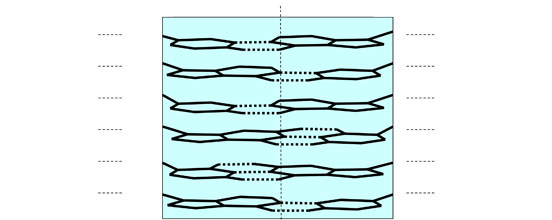
The inner revolving doors became the twisting inner base pairs.
Scaled up 1.1 billion times actual size, the height of the doors limited us to a half helical turn of the smallest chromosome, number 21. To reconstruct a complete full-scale representation Dr Roberts calculated that we would have to stack 10 million revolving doors on top of each other. This tower of doors would be 20,000 km high!
Now we were beginning to grasp just how small DNA is...
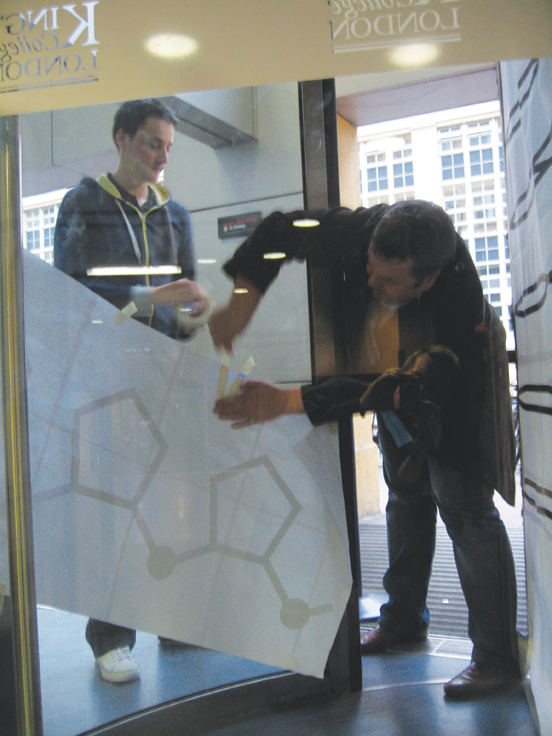
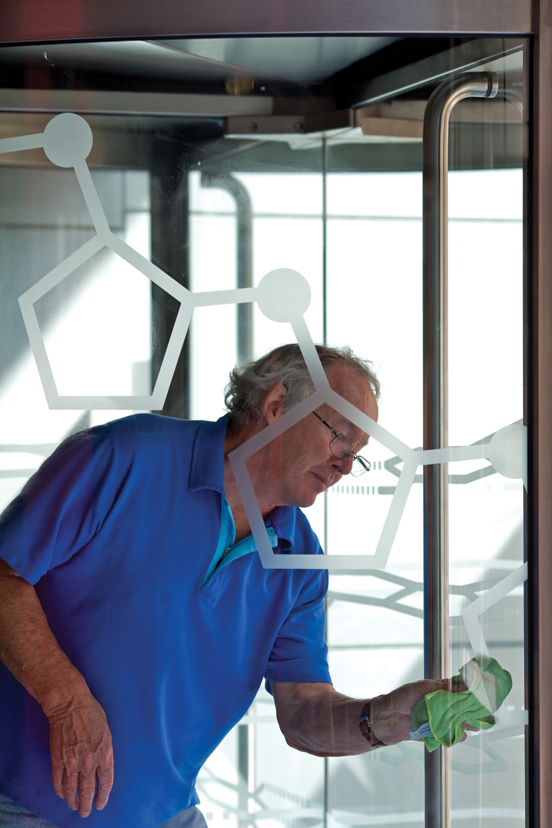
It took a number of on-site trials before our artwork was ready. It then took the fitters two days to apply the frosted vinyls to the cylindrical glass surface. They had never before had to apply something quite as complex with such accuracy — but it was worthwhile.

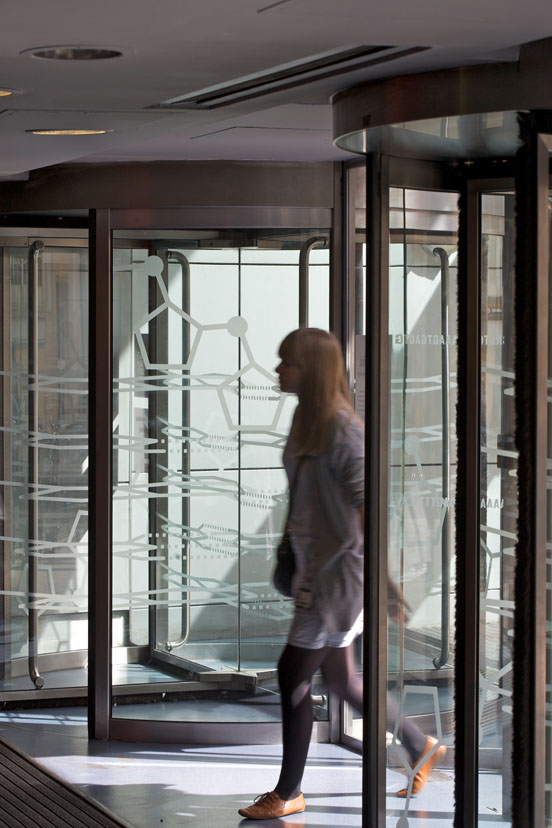
Now every visitor who walks through the doors can be in no doubt about the structure and scale of DNA, nor indeed of the university where this ground-breaking early research into its structure took place. We thank Dr Roberts for his patience with we 'right brain' thinkers. He, on the other hand, seems very happy to have several full-scale teaching aids to refer to when he is lecturing his real students.
 Christine Ayre, Head of Corporate Design, King's College London
Christine Ayre, Head of Corporate Design, King's College London
Other King's projects: Ripple Effect , Shoulders of Giants , On the Front Line , Meet the Professors , Making a Difference , Puzzling Moves , University Alumni , Selling a University , Opening Doors...